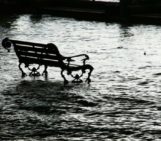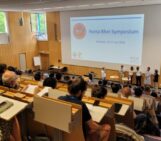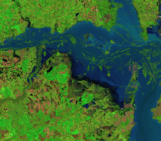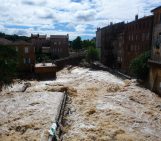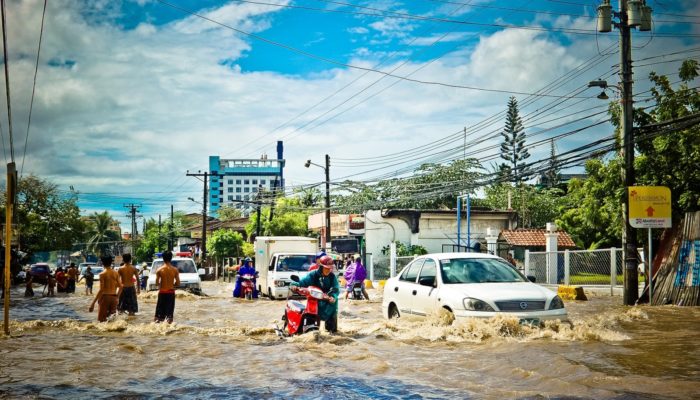
The interplay between human societies and floods dates back to Old World civilizations. Floodplains have provided the potential for prosperous agriculture and for the development of organised communities and urban cultures. Contextually, flood events have caused millions of fatalities and invaluable economic losses throughout history. Over the past decades, human activities have increasingly altered the frequency, magnitude, and spatial distribution of flooding. In this context, Professor Giuliano Di Baldassarre will give us today his personal take on floods in the Anthropocene, analysing ‘the good’, ‘the bad’ and ‘the ugly’ generated by the interplay of floods and society.
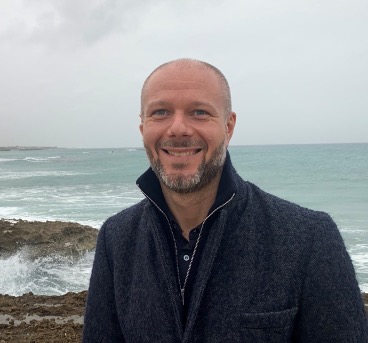 Giuliano Di Baldassarre is a Professor of Hydrology and Environmental Analysis at the Department of Earth Sciences of Uppsala University. He is also the Director of the Centre of Natural Hazards and Disaster Science (CNDS), which currently supports about 30 early-career scientists (PhD candidates and postdocs in social, engineering and earth science) in three Swedish universities. He was the Chair of Panta Rhei–Everything Flows in the period 2017-2019, the global research initiative of the International Association of Hydrological Sciences (IAHS), bringing together hundreds of scientists worldwide doing research on water and society. Currently, he leads an interdisciplinary research group as the PI of the project HydroSocialExtremes funded by the European Research Council (ERC, Consolidator Grant). Giuliano has been the recipient of numerous honours, including the Witherspoon Lecture Award by the American Geophysical Union (AGU), the Thuréus Prize by the Royal Society of Sciences in Uppsala, and the recent Plinius Medal by the Natural Hazards Division of the European Geosciences Union (EGU).
Giuliano Di Baldassarre is a Professor of Hydrology and Environmental Analysis at the Department of Earth Sciences of Uppsala University. He is also the Director of the Centre of Natural Hazards and Disaster Science (CNDS), which currently supports about 30 early-career scientists (PhD candidates and postdocs in social, engineering and earth science) in three Swedish universities. He was the Chair of Panta Rhei–Everything Flows in the period 2017-2019, the global research initiative of the International Association of Hydrological Sciences (IAHS), bringing together hundreds of scientists worldwide doing research on water and society. Currently, he leads an interdisciplinary research group as the PI of the project HydroSocialExtremes funded by the European Research Council (ERC, Consolidator Grant). Giuliano has been the recipient of numerous honours, including the Witherspoon Lecture Award by the American Geophysical Union (AGU), the Thuréus Prize by the Royal Society of Sciences in Uppsala, and the recent Plinius Medal by the Natural Hazards Division of the European Geosciences Union (EGU).
It was only when I visited the transboundary river Soliette between Haiti and the Dominical Republic that I could see with my eyes why people need to live close to water bodies.
Hi Giuliano and thank you for accepting this interview. I would like to start directly with the point highlighted in the title: the good of the interactions of floods and society. What have we achieved so far?
The good news is that global flood mortality and loss rates have decreased significantly over the past decades [1–3]. Formetta and Feyen [1] show that there has been a reduction in both human and economic vulnerability to floods worldwide. Pielke [2] also found that weather/climate economic losses as a proportion of global GDP have decreased since 1990. These encouraging trends have been primarily driven by trends in Asian countries, and Bangladesh is a case in point. The country has experienced a substantial decrease in flood fatalities over the past decades [3]. In a recent paper [3], we attributed it to a general increase in preparedness facilitated by, among other factors, the introduction of early warning systems and growing access to education.
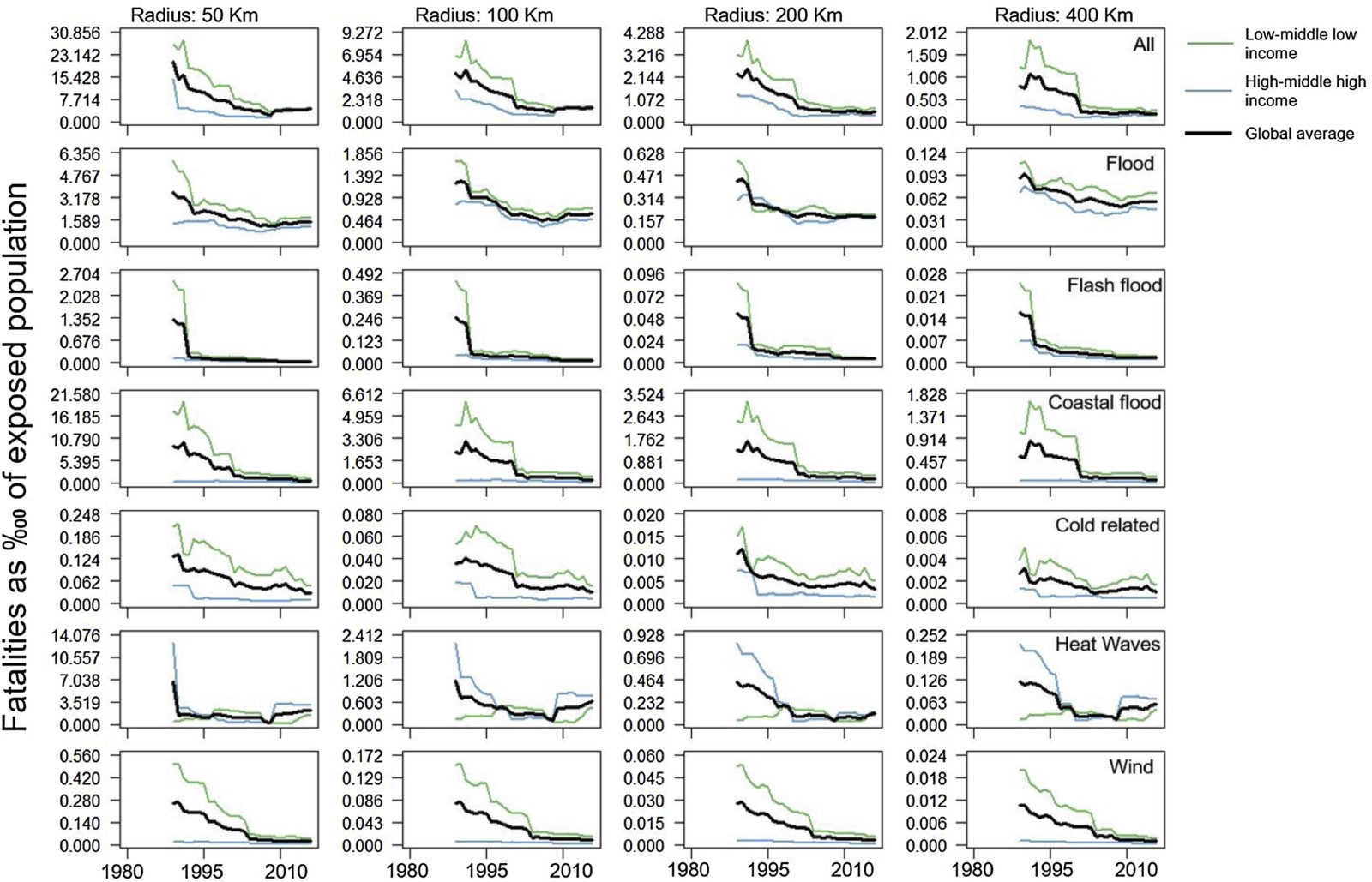
Figure 1. Mortality rates for multiple hazards, including floods (Source: Formetta and Feyen 2019)
What is the unsolved, the bad, of floods in the Anthropocene?
While global trends are encouraging, flood losses are still severe and increasing in many regions of the world. The number of fatalities caused by flooding in Africa, for example, has grown more than its total population over the past decades [4]. Moreover, there is no guarantee that the aforementioned global trends of decreasing flood mortality and loss rates will continue in the future. Climate change might increase the frequency and severity of extreme events, while human activities increasingly influence floods indirectly (climate change), deliberately (levees and reservoirs) or not (deforestation and urbanization).

Figure 2. Flood fatalities and population growth in Africa (Source: Di Baldassarre et al. 2010)
What is the real challenge, the ugly, that probably can’t be solved, causing irreversible effects on our societies and affecting our resilience?
Social injustice. The catastrophic and unequal consequences of the 2005 flooding of New Orleans (Katrina) is emblematic: class, gender, age, socio-economic status, and race critically affected vulnerability to, and recovery from the disaster [5]. Marginalized groups are often located in flood-prone areas, while higher-income residents often occupy safer grounds or choose to live in hazardous locations (waterfronts) for aesthetic reasons and can externalize vulnerability by, for example, buying flood insurance [5]. Moreover, lower-income groups often rent or own homes that are more likely to be susceptible to flooding. They can also lack private transport or alternative accommodation needed for evacuation. Lastly, inequalities affect the ability of different societal groups to recover from a disaster in addition to unjust distributions of costs and benefits of preventive measures of flood risk reduction [6].
I would like to move a bit personal because your career has been marked by a great contribution in the field of natural hazards, especially with socio-hydrology challenges in different cultures and environments. What inspired you to pursue this scientific path? What triggered you to combine hydrological modelling with socioeconomic databases?
The study – and direct experience – of a number of extreme events gradually re-shaped my scientific curiosity and led me to broaden the scope of my research. When I did my PhD on flood inundation modelling, for example, I used to think that most flood risk problems would essentially be solved by moving people out of flood-prone areas. It was only when I visited the transboundary river Soliette between Haiti and the Dominical Republic that I could see with my eyes why people need to live close to water bodies [7]. This inspired my theorisation of floodplains as fully coupled human-water systems [8] in which complex trade-offs between the social benefits of living in floodplains and the human costs of flooding events coevolve in time and space.
As you are a mentor for many early-career scientists, is there any inspirational message you would like to share? This may spoil some of the key messages you are going to share during the Plinius Medal Lecture on April 21st!
Keep in mind the big picture and avoid ending up with tunnel vision. Progress in science requires us to go deep into our specific topic, but we should try – hard – to have a holistic view of the world. As a hydrologist, I focus my research on the study of drought and flood risk, but I always try to remember that human societies have potentially conflicting goals (see, for example, the UN’s SDGs) and deal with multiple hazards – not only droughts and floods – not to mention heterogeneous – and ever-changing – risk perceptions [9]. Being aware of this complexity influences my research agenda as well as the societal implications of my work. How? Well, come and see my Plinius Medal Lecture on April 21st!
References:
- G. Formetta, L. Feyen, Empirical evidence of declining global vulnerability to climate-related hazards. Glob. Environ. Chang. 57, 101920 (2019).
- R. Pielke, Tracking progress on the economic costs of disasters under the indicators of the sustainable development goals. Environ. Hazards. 18, 1–6 (2019).
- M. R. Ferdous, G. Di Baldassarre, L. Brandimarte, A. Wesselink, The interplay between structural flood protection, population density, and flood mortality along the Jamuna River, Bangladesh. Reg. Environ. Chang.20, 1–9 (2020).
- G. Di Baldassarre, A. Montanari, H. Lins, D. Koutsoyiannis, L. Brandimarte, G. Blschl, Flood fatalities in Africa: From diagnosis to mitigation. Geophys. Res. Lett. 37, 2–6 (2010).
- M. Rusca, G. Messori, G. Di Baldassarre, Scenarios of human responses to unprecedented social-environmental extreme events. Earth’s Futur. (2021), doi:10.1029/2020EF001911.
- W. Neil Adger, in Der Klimawandel, M. Voss, Ed. (VS Verlag für Sozialwissenschaften, Wiesbaden, 2010; http://link.springer.com/10.1007/978-3-531-92258-4), pp. 327–345.
- L. Brandimarte, A. Brath, A. Castellarin, G. Di Baldassarre, Isla Hispaniola: A trans-boundary flood risk mitigation plan. Phys. Chem. Earth. 34, 209–218 (2009).
- G. Di Baldassarre, A. Viglione, G. Carr, L. Kuil, J. L. Salinas, G. Blöschl, Socio-hydrology: conceptualising human-flood interactions. Hydrol. Earth Syst. Sci. 17, 3295–3303 (2013).
- M. Garschagen, S. L. R. Wood, J. Garard, M. Ivanova, A. Luers, Too Big to Ignore: Global Risk Perception Gaps Between Scientists and Business Leaders. Earth’s Futur. 8, 1–5 (2020).
Post edited by Asimina Voskaki, Gabriele Amato.

